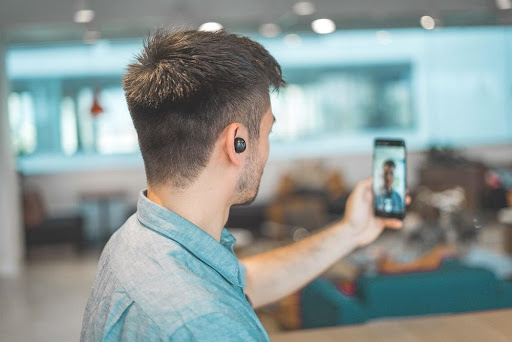Video calls are now commonplace. Businesses that value cost efficiency and communication should consider using them. Discover some of the significant changes by continuing to read.
COVID-19 pandemic
Workplace procedures and the use of video conferencing have undergone substantial adjustments as a result of the COVID-19 epidemic. Zoom noted ten million meetings per day in December 2019. Zoom will have 300 million users by the end of April 2020. The attendance rates in Google Meet and Microsoft Teams’ daily meetings also significantly increased. According to this development, video calling is not only a cost-efficient way to communicate with loved ones, coworkers, and acquaintances, but it is also beneficial in avoiding COVID-19.
Apps
Almost any device, including smartphones, tablets, and desktop PCs, can be used to make free chat video calls. One of the most widely used video calling apps is Skype, which is accessible on Macs, Windows, Android, and iOS devices. This well-known program offers a user-friendly layout and just introduced video calling capabilities. Additionally, you can create new group chats or select an existing one. Even better, Messenger users can view movies and TV shows together.
The well-known Messenger app is one of the other video calling apps. For two-person video conversations, it changes to a peer-to-peer architecture and is free to use. It also supports up to eight people. Messenger is the best option if you’re concerned about Facebook monitoring your video calls. It is free to download and compatible with almost all mobile platforms and operating systems. Additionally, it’s a fantastic choice for those who want to use video calling on their mobile devices.
Other well-liked choices are Shagle chat and Google Duo. While Google Duo enables up to 32 video chat participants, Facebook Messenger allows you to have one-to-one video chats with up to 50 individuals simultaneously. Both apps are compatible with Android and iOS smartphones. The meet is Google’s alternative choice. Alongside Facebook and Google Chat, this service is available. But the majority of consumers utilize G Suite. Thus, Google Duo and Meet are two well-liked substitutes.
Psychological benefits
Video calls have numerous benefits, but they can also be harmful. While video chats might facilitate social interactions, they may also lead to an increase in stress. To assess whether video calls are beneficial or detrimental to users’ mental health, more research is required. The following are a few psychological
Video calls can often make people anxious. If at all possible, avoid using video conferencing and only utilize it when absolutely essential. Take a break during l chat live girl lengthy meetings or try scheduling your online meetings for shorter times. Additionally, gazing at the camera helps to establish an authoritative presence and lowers fear. Be sure to completely avoid video calls if you’re worried that they might make you tired. Physical conditions like zoom fatigue, which can have negative impacts on the body, can also result from these video conversations.
Social media
You might be wondering how social media has affected video calling, whether you use a stand-alone service like Skype or an online platform like Facebook or Google+. The convergence of social media and video calling offers the solution. Both will have significant effects on millions of people in the future. Let’s examine how social media has affected video calling in more detail.

The simplicity of sharing has been one of the social media’s most important developments. People can freely exchange knowledge and experiences with others using social media. These capabilities are now simpler and more practical for everyone thanks to the recent trend in video calling. More individuals than ever may now interact in real-time thanks to social networks like Facebook, Twitter, and YouTube. Despite the fact that video calling is now more widely available thanks to these new social media platforms, there are still some disadvantages to be aware of.
Impact on businesses
In today’s marketing and communications, business video calling is crucial. Face-to-face connection is valued by businesses of all sizes because it facilitates robust, context-rich interactions. The next best thing to being in the same room for business is video conferencing. It facilitates stronger customer relationships and enhances customer service for organizations. Video calling is now a potent sales tool for businesses. Here are a few ways video calling can benefit your company.
Video calls can be bothersome, and they might raise the bar for what is expected of distant workers. Remote workers must always be “on” for video calls. Employees are now required to be “on” while they are at home, as opposed to just during office hours. Their professional and personal identities may become inconsistent as a result, which can impair self-esteem. Nevertheless, a lot of companies are undergoing change. If you’re assessing the value of video conferencing and aren’t sure if it’s right for you, take into account some of these factors.







